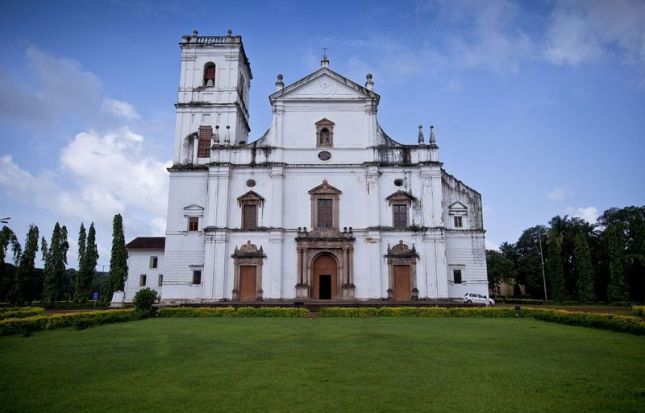
City Palace of Jaipur has a great historical past and is located in the northeastern part in the originally designed city. It is a popular tourist spot as it is visited by a large number of tourists. The gleaming beauty of the palace attracts the travelers towards it. Once it was the seat of the Maharaja of Jaipur who was head of the Kachwaha Rajput clan. The palace was built in the 18th century means between 1729 and 1732, by the ruler of Amber – Sawai Jai Singh II. He made it with the help of popular architectures of that time period. Apart from the glorious architecture, the palace also offers a ravishing view of the Pink City.

City Palace Entrance Gate
The complex of the palace comprises of the Chandra Mahal, Mubarak Mahal, Mukut Mahal, Maharani’s Palace, Shri Govind Dev Temple and the City Palace Museum. There are many pols (gates) to enter the palace namely Virendra Pol, Udai Pol, Tripoli Gate and Atish Pol. Courtyards are arranged in a linear series in the palace.

Inside City Palace
On the ground floor, there is a Pritam Niwas with a small audience hall in its center. The next two storeys are occupied by the marvelous Sukh Niwas. Above of this Niwas, there is the Rang Mahal also known as Sabha Niwas and then the Chhavi Niwas with blue painted interiors, Shri Niwas with the Sheesh Mahal and finally the crowning painting of Mukut Mandir. The arches, motifs, opening, balcony, all shows the Rajput tradition architecture. Compacted and Symmetrical masses were the feature of that period which is reflected in the architecture of the City Palace.
The main attractions inside the palace complex are as follows:-
Mubarak Mahal – This Mahal was built with an amalgam of Islamic, Rajput and European architectural styles by Maharaja Madho Singh II as a reception center of the palace. A beautiful display of the voluminous clothes worn by Sawai Madhosingh I with his 108 wives attracts many visitors towards it.

Mubarak Mahal inside City Palace,Jaipur
Chandra Mahal – Chandra Mahal is the most compelling building in the City Palace complex. It is a seven storeyed building and each floor has been given a specific name like Sukh Niwas, Ranga Mandir, Chabi Niwas, Shri Niwas and Mukut Mandir. This Mahal contains a large number of unique paintings, floral decorations.

Chandra Mahal
Diwan-I-Khas – Earlier, it was a private audience hall of the Maharajas. On display, there are two huge sterling silver vessels of 1.6 meters height and each with a capacity of 4000 liters and 340 Kilogram weight. These vessels are recorded by the Guinness Book of World Records.

Diwan-I-Khas
Diwan-I-Aam – Diwan-I-Am or the Hall of Public Audience is a chamber rich in red and gold colors and decorated with ceiling paintings. It looks dynamic in nature. Now the chamber is like an art gallery, exhibits many exquisite paintings, ancient texts, embroidered rugs, Kashmiri shawls and carpets. Many handwritten original manuscripts belonging to Hindu scriptures can be seen in this gallery. Scripts related to Bhagvad Gita are placed there. Also, visit the Golden Throne locally called as Takht-e-Rawal in the art gallery. Golden throne was the seat of the Maharaja at the time of public audience.

Diwan-I-Aam (Sabha Niwas) or the Hall of Public Audience
Maharani Palace – As the name suggests itself, it was the residential place of the royal queens of historic times. Now, it has been converted into a museum where weapons used by the royal kings during war campaigns are displayed.

Maharani Palace Interior
Govind Dev Ji Temple – This temple is dedicated to the Hindu God Lord Krishna and is part of the city palace complex. It is set in a garden environment outside the walls of the palace. It contains the paintings belonging to Indian art. The main thing that allures people in this temple is the ceiling which is ornamented with gold. This temple is located just before the Chandar Mahal Palace where the Maharaja resides and could able to get the direct view of the temple from his room.

Govind Dev Ji Temple
So, the palace is worth visiting site and nobody should miss it while making his/her trip of Rajasthan as it is the luminous heritage site of Rajasthan.






































